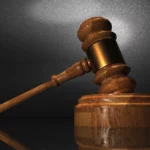Many traffic accidents happen every day, in the car, on a bicycle or as a pedestrian. Because no matter how careful you are in traffic, others are often not. The result is an accident, sometimes with only material damage, but often also with personal injury.
A collision therefore often has financial consequences in addition to personal consequences. It is logical that you want to recover the personal injury you suffer as a result of a traffic accident. This concerns all costs you incur, but also income damage. In addition, you are entitled to an amount of damages.

Claiming personal injury damages after a collision is not easy and an accident also raises many questions, who is to blame for a rear-end collision and if I am involved in an accident, who will pay for my damages?
Who is at fault in a collision?
Who is at fault in a collision depends on the traffic rules and any other legal regulations. For example, if it concerns a bicycle accident (Dutch: fietsongeluk). In a number of European countries, including the Netherlands, a cyclist is always entitled to compensation in the event of a collision. This applies if the other party is at fault, but also if the cyclist himself commits a traffic error. For example, because the cyclist drives through a red light or because he or she does not give priority to a car coming from the right.
The only condition for this scheme is that a cyclist in the Netherlands has been hit by a car or other motor vehicle. However, in the event of your own fault, only 50% of the personal injury damage is reimbursed. This is only different in the case of serious and permanent injuries on the basis of the fairness correction.
But what happens in the event of a car collision? The rules are fairly similar in Europe. In principle, the driver who rear-ends another person is guilty of the traffic accident. This party must then compensate for the other party’s personal injury. But liability is also often a given if you fail to give priority or make another traffic error.
What to do after a collision?
If you have been hit as a motorist or cyclist, the burden of proof lies with you as the plaintiff. You must prove that the other party is to blame for the collision. But how do you prove that someone else is at fault for a collision and is therefore obliged to compensate for your personal injury?
It is important that a claim form is completed after a collision. There is a European claim form available, so in Europe the form is the same in most countries. You can enter important information on the collision damage form, such as the insurance details of the parties. But you can also describe and draw the circumstances of the accident. This way you can clearly indicate what exactly happened, for example a rear-end collision or a priority error resulting in a side collision.
If both parties sign the claim form, the contents are in principle binding between the parties. The judge will then assume that the contents of the claim form are correct.
Join 25,000+ smart readers—don’t miss out!





